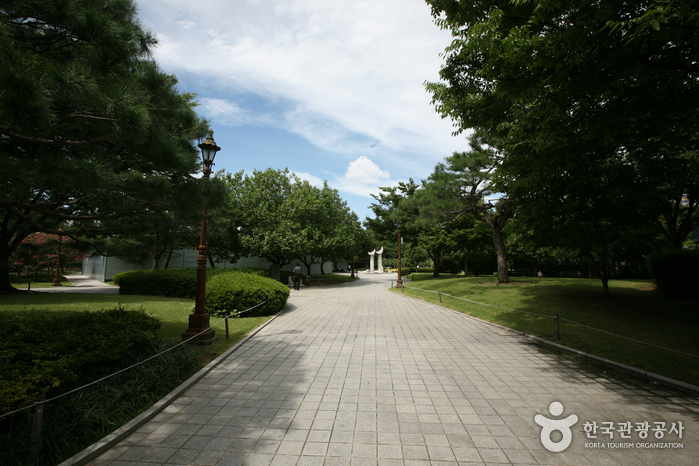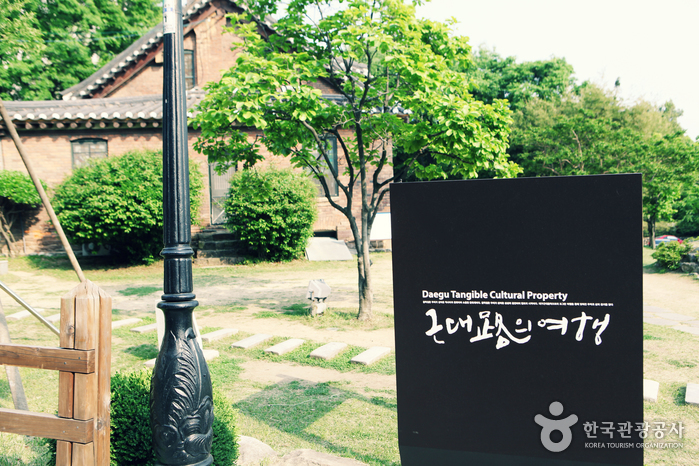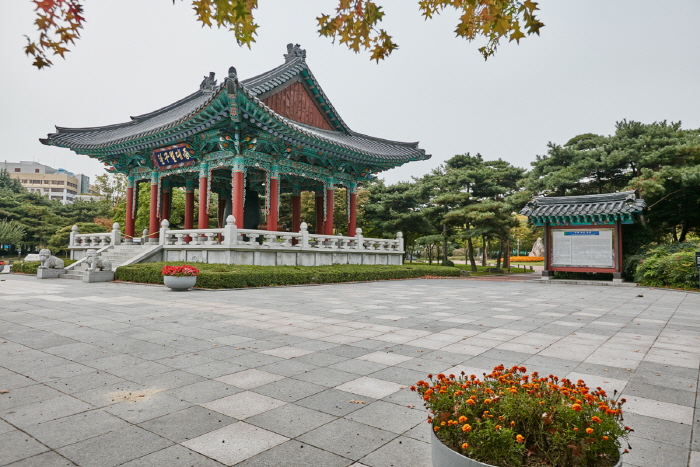Daegu Yangnyeongsi Museum of Oriental Medicine (대구약령시 한의약박물관)
589.2M 2023-01-06
49, Dalgubeol-daero 415-gil, Jung-gu, Daegu
+82-53-253-3359
Yangnyeongsi Museum of Oriental Medicine continues to provide an opportunity to experience the 350-year-old traditions of Oriental medicine and medicine markets through multiple exhibitions and various hands-on experience programs. The museum provides graphics and animation shows in four languages as well as approximately 300 items on display. The first floor also houses the nation’s only wholesale market of traditional medicinal herbs.
Jeongilpoom - Dongseong-ro Branch [Tax Refund Shop] (정일품 동성로 [사후면세점])
589.6M 2024-04-23
147, Gijanghaean-ro, Gijang-eup, Gijang-gun, Busan
-
Gyeongsanggamnyeong Park (경상감영공원)
593.6M 2018-08-07
99, Gyeongsanggamyeong-gil, Jung-gu, Daegu
+82-53-254-9404
Located in central Daegu, Gyeongsanggamyeong Park was built during the 34th year of King Seonjo of the Joseon Dynasty (1601) and was the original location of Gyeongsanggamyeong (1910), the office of the Gyeongsangbuk-do governor. In 1965 the provincial office was moved to another location and the park opened its doors to the public under the name of Central Park. The park was renamed again in 1997 and has been known as Gyeongsanggamyeong Park ever since.
Many cultural and historical heritages are located in the park including the Seonhwa-dang building where the governor worked (Daegu Tangible Cultural Property No.1); the Jungcheong-gak building that was one of the governor’s residences (Daegu Tangible Cultural Property No.2); and Seonjeong-bi gravestone where governor’s achievements are engraved. Seonhwa-dang building in particular has historical significance since it is one of the few remaining government buildings.
The park is well loved by citizens for its green forest, beautiful flowers, well-developed grass plaza, scenic fountain area, and its comfortable walking paths.
Daegu Modern History Streets (Tour of Modern Streets) (대구 근대골목(근대로의 여행))
596.0M 2023-10-27
66, Gukchaebosang-ro 102-gil, Jung-gu, Daegu
+82-53-661-3327
Daegu Modern History Streets is an experiential tour that brings the participants across Daegu’s alleyways and living history. During the Korean War, Daegu was much less damaged than other regions. Because of that, the city retains the changes in lifestyles before and after the war relatively well.
There are 13 courses in total, run by regional self-governance groups in Daegu, defined according to different themes and areas. The most popular among them is Course 2, the Modern Cultural Street, which takes visitors on a tour of major sites associated with Daegu’s modernity. Follow the retro aesthetics and the history of Daegu and Korea along places like Kyesan Catholic Church, Jeil Church, old houses, and the former Chinese Elementary School.
Note that multilingual tours are offered to international visitors in English, Japanese, and Chinese, in regular tours (14:00 every Saturday) and on-demand tours (available for groups of more than 5). Reservations are offered on the official website.
Gaejeong (개정)
609.2M 2020-06-01
36-6, Dongseong-ro, Jung-gu, Daegu
+82-53-422-0366
Opened in 1978 in central Daegu, Gaejeong is a Korean restaurant that focuses on serving nutritious meals based on food chemistry and original recipes.
Daegu Jeil Church (대구제일교회)
618.9M 2024-10-11
50, Gukchaebosang-ro 102-gil, Jung-gu, Daegu
+82-53-253-2615
Daegu Jeil Church is the oldest Protestant Church in Gyeongsangbuk-do Province. Initially established in 1898 over four tile-roofed houses, Daegu Jeil Church was rebuilt in 1933 with traditional and Western architectural designs. Subsequently, Deacon Lee Ju-Yeol dedicated a 33m bell tower in 1937, whlie the church underwent an interior renovation in 1969, and an expansion in 1981.
In conjuction with its physical development, which was at the forefront of the nation's architectural modernization, the church contributed largely to modernization and expansion of Christianity in the region as well as in Korea. In addition, by introducing modern medicine and education to the citizens of Daegu, the founders of Daegu Jeil Church stimulated social development in the region.
National Debt Redemption Movement Memorial Park (국채보상운동기념공원)
625.6M 2021-08-25
670, Gukchaebosang-ro, Jung-gu, Daegu
+82-53-745-6753
Construction on the National Debt Redemption Movement Memorial Park began in March 1998 and was completed in December 1999. The park was established to retain the spirit of the National Debt Redemption Movement that originated in Daegu in 1907 and the 2nd movement in 1997 that was held to help overcome the national economic distress affected by the Asian Financial Crisis of 1997. The park also expanded the green space in the downtown area and offers a place of rest and relaxation to the general public.
Spanning 42,500 square meters in size, the park boasts the Dalgubeol Grand Bell, a bell pavilion, walking trails, and other amenities. The famous Dalgubeol Grand Bell was installed on the park grounds in December 1998 as a representation of harmony and prosperity and to symbolically awaken the people with its pure and clear ringing. In addition the convenient and beautifule amenities, the park also has several memorial plaques engraved with quotes from many significant historical figures who shaped Korea's culture and values.
Zenith - Daegu Branch [Tax Refund Shop] (제니스 대구)
634.3M 2024-04-19
75, Dongseong-ro, Jung-gu, Daegu
-
Gyonam YMCA (교남YMCA)
637.9M 2023-01-20
22, Namseong-ro, Jung-gu, Daegu
Established in December 1921, the Gyonam YMCA Hall served as a gateway to the modern movement in Daegu. During the Japanese colonial period, it was a meeting place and a base for Christian national movements such as the Product Promotion Movement, the Christian Rural Movement, and the Singanhoe Movement. This hall is a two-story red brick building built by the American missionary Blair in 1914. It retains the characteristics of the 1910s and '20s masonry construction, such as decorating the first and second floors with cornices and securing a square window with arches. In the early days, it was used as a place for students' education, evening classes, and lectures.

![Jeongilpoom - Dongseong-ro Branch [Tax Refund Shop] (정일품 동성로 [사후면세점])](http://tong.visitkorea.or.kr/cms/resource/58/2883958_image2_1.jpg)



![Meric S [Tax Refund Shop] (메릭 S)](http://tong.visitkorea.or.kr/cms/resource/79/2883979_image2_1.jpg)
 English
English
 한국어
한국어 日本語
日本語 中文(简体)
中文(简体) Deutsch
Deutsch Français
Français Español
Español Русский
Русский